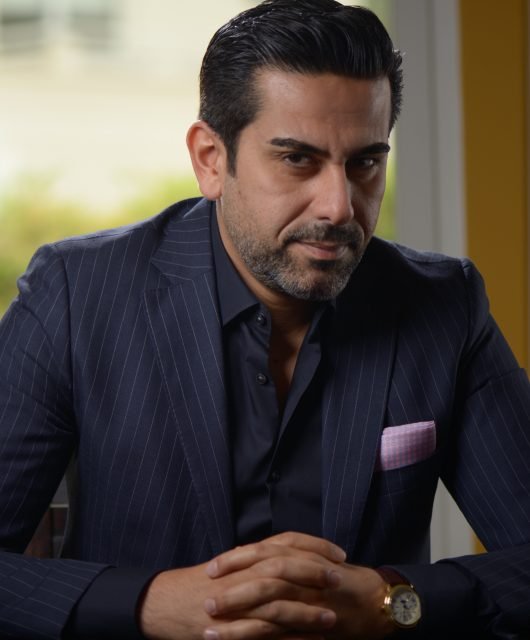One of the significant business model developments encouraged by digital renaissance is the birth of digital marketplaces, professionally known as ‘eCommerce’. The rise of eCommerce came with an entire evolution to brands’ experiences, market dynamics and consumer empowerment. The Brandberries has exclusively interviewed Karen Crum, Head of Strategy at McCann London, on her take on how eCommerce empowers brands.
BB: The global eCommerce market has been on a massive rise, unlocking a wide multitude of opportunities for retail and non-retail brands as well. Can you shed some lights on how eCommerce can be a pivotal growth imperative for businesses?
KC: E-commerce is table stakes now for the majority of businesses and brands. But consumers come first. And there is now an expectation that you can buy pretty much anything you need, at any time you want. I think it can unlock growth for many brands and businesses, but for others, it will feel less like a growth investment (if you asked a lot of traditional grocery retailer brands, I imagine they wish it wasn’t table stakes…because the entry cost is high and the margin is low).

But e-commerce enables a very direct relationship between brand and consumer. With the right ‘data philosophy’, this means that brands can be more in tune with what the consumer might need or want. And by asking interesting questions of that data, you might be able to bring an idea to them that they hadn’t realise they’d love.
BB: Global giants like Amazon and eBay were the trailblazers at the forefront of the eCommerce industry, revolutionizing the whole customer experience equation. What does eCommerce mean for consumers? and how it’s reshaping the way consumers engage with brands?
KC: I am going to stick to the macro themes here around ‘choice’ and ‘convenience. Jeff Bezos saw a statistic that World Wide Web usage was growing by 2300% a month, before drawing up a list of 20 potential products he thought might sell well via the Internet when starting Amazon. It’s a reminder that at it’s simplest, e-commerce provides people with another choice of how/where to buy something. Sometimes it will be more convenient and become the preferred way of buying. But sometimes going to a physical shop will suit the person, or the product better.
BB: What are the considerations brands should consciously be aware of on their road to a successful digital transformation strategy?
KC: Brands should be consciously aware that consumers don’t see any difference between offline and online, so neither should businesses.
BB: eCommerce is undeniably uprising, however retail technology giant brands, like Samsung, have reported that 90% of the buying decisions still happen in store, which defies the whole concept of the power of eCommerce. Please comment.
KC: I heard Angela Ahrendts SVP Retail speak about this in regard to why they developed ‘Today at Apple’. I thought it was brilliant and really inspiring – and something lots of business and brands could learn from. They knew that digital was continuing to grow at x3 times the rate of physical purchases, but in the next 5 years, 75% of business would be done in-store. Retail has to serve a bigger purpose other than sell. Today at Apple was brilliant because it built this bigger purpose and it wasn’t about ‘selling’, it was about getting people connected to what the products enabled people to do.
I’m not sure I agree with your point from Samsung that the 90% ‘buying decisions’ happen in store. The buying ‘moment’ may happen instore, but the decision to make the purchase could have happened anywhere along the way. Be that through ‘shop and learn’ or by reading about it in editorial. People’s decision making is largely emotional, not logical. We can’t read people’s minds so we don’t exactly know where, when or how that decision happened. There can be a tendency for marketeers to want to fit human decision making into neat little boxes, make it feel black and white. But it’s greyer than that. Anything you do with retail, be that physical or digital, should reflect the fact people will move through those ‘spaces’ you create in their own way. Sometimes they’ll buy through e-commerce. Sometimes they’ll buy instore. Just make sure the experience is excellent anywhere they go.
BB: In a history-making campaign, McCann London in collaboration with Microsoft’s Xbox has unveiled ‘The Fanchise Model’ whereby gamers can take ownership of their controllers’ designs. Can you elaborate on the strategy and creative directions of the campaign? How it has achieved consumer relevance and brand transformation?
KC: I’ve thought about this a lot lately, as since we won the Grand Prix at Cannes Lions last people, people have often asked why we all think the idea worked so well. Every one of us that worked on it would probably give a slightly different answer, and there are some great interviews with Sanjiv Mistry and Jamie Mietz (the ECDs) that you should read to hear the creative view point. From my side, I think we thought a lot differently about value of our idea to the most important stakeholder of all…the consumer. Because we are trained to think about ideas and how they work from the viewpoint of the brand and business, and ensure that the business gets ROI – we did this with the Fanchise Model. But we also looked at what would be really valuable to the consumer, beyond just buying a product.
Our hypothesis is that the Xbox Fanchise Model campaign gained traction because it put consumer value exchange at the heart of the idea. But it didn’t just offer some small value to all consumers, it really rewarded people for deeply engaging with the campaign. You might design and buy a controller, but with a little effort to support further sales, you can be rewarded, or even profit from your design – something you simply can’t do with other products.
Faris Yakob talked about the idea of a balanced value exchange in his book “Paid Attention: innovating advertising in the digital world”. Maybe we shifted it even further than he suggests to a ‘reward exchange model’. Because there was a reward for the consumer’s engagement, not just the brand or business. I do think this idea of the ‘reward exchange model’ is something that could be really used in other ideas/brands in e-commerce, I’m excited to see who might do what next!





